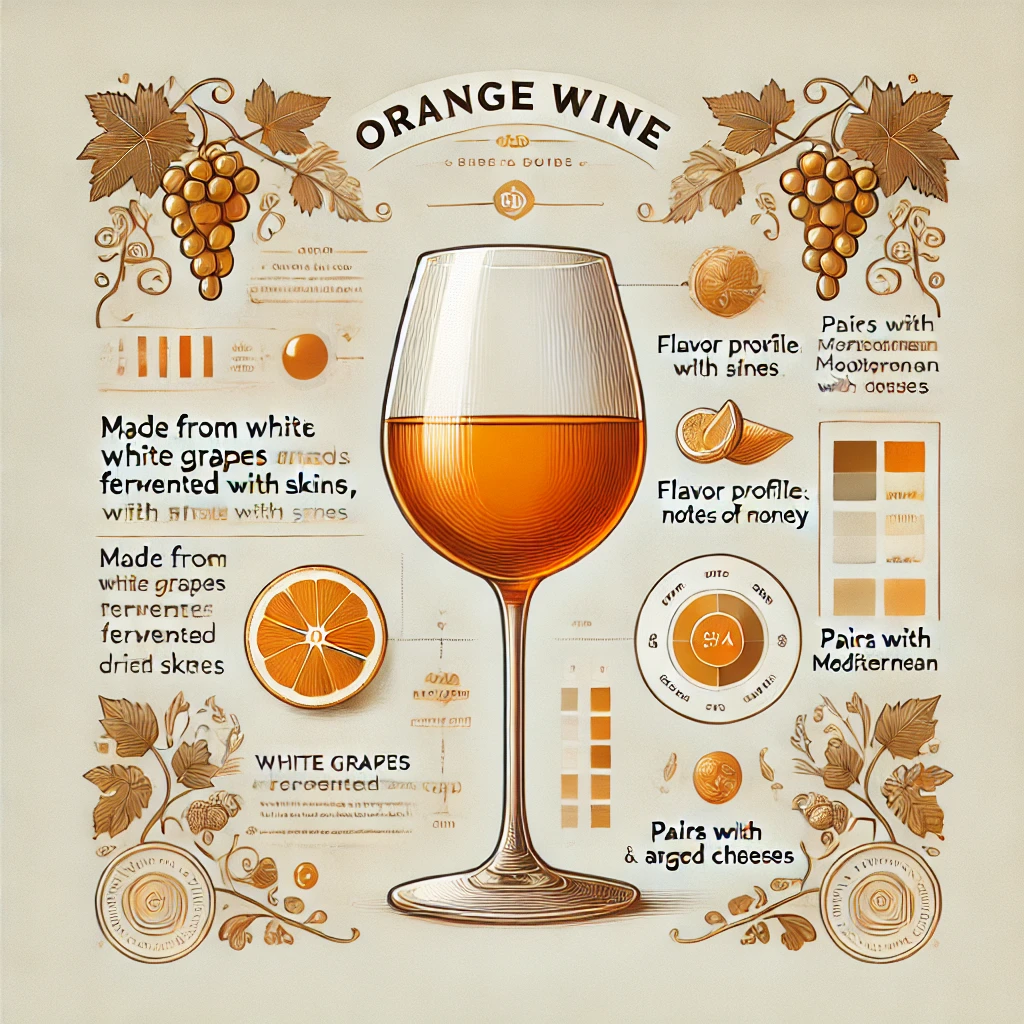
When amber-hued wine fills your glass, you're not just experiencing a color – you're tasting thousands of years of winemaking history reimagined for contemporary palates. Often called orange wine, this ancient-meets-modern approach to white wine production has emerged as one of the most fascinating developments in natural wine.
What Makes Orange Wine "Orange"? Unlike conventional white wines where grape skins are removed immediately after pressing, orange wines keep white grape varieties in extended contact with their skins, seeds, and sometimes stems during fermentation. This prolonged maceration period, ranging from a few days to several months, creates that distinctive amber-to-orange color spectrum while extracting tannins, phenolic compounds, and complex flavor compounds.
The Skin-Contact Revolution The extended skin contact does more than just add color. This technique produces wines with:
- Enhanced textural complexity and grippy tannins - Higher antioxidant content from extended phenolic extraction - Concentrated flavors ranging from stone fruit to tea-like characteristics - Natural preservation capabilities from increased tannin structure - Greater aging potential compared to conventional white wines
A Return to Ancient Methods What's now trendy in wine bars worldwide was once the standard approach to winemaking in the Caucasus region, particularly in Georgia. Traditional production involves fermenting grapes in qvevri – large clay vessels buried underground for temperature stability. This minimal intervention approach allows:
- Natural temperature control through earth insulation - Spontaneous fermentation from indigenous yeasts - Gradual oxidation through clay vessel porosity - Complete utilization of all grape components
Modern Interpretations Today's orange wine producers combine these ancestral techniques with modern understanding of:
- Oxygen management during fermentation - Temperature control for optimal extraction - Microbial ecology in natural fermentation - Clay vessel manufacturing improvements - Hygiene protocols for minimal intervention
Tasting and Appreciating Orange Wine The flavor profile of orange wines defies conventional white wine expectations:
- Dried apricot, honey, and bruised apple notes - Black tea, walnut, and sourdough bread complexity - Firm tannins creating a structure more similar to red wines - Extended finish with evolving mineral and umami characteristics
Food Pairing Possibilities The unique structure of orange wines opens up exciting pairing opportunities:
- Bold enough for red meat dishes - Complex enough for aged cheeses - Structured enough for spicy cuisines - Versatile enough for challenging ingredients like asparagus
Natural Wine Connection Orange wines often overlap with natural wine principles:
- Minimal or zero sulfite addition - Indigenous yeast fermentation - No filtering or fining - Organic or biodynamic viticulture - Low-intervention cellar practices
Understanding Quality Markers When exploring orange wines, look for:
- Clarity in the glass (cloudiness isn't a flaw but shouldn't be excessive) - Integration of tannins (grippy but not harsh) - Balance between oxidative and fruit characteristics - Clean fermentation aromas (funk can be present but shouldn't dominate) - Stable color (deep amber to light orange, not browning)
Storage and Service To maximize your orange wine experience:
- Serve slightly warmer than conventional white wines (50-55°F) - Allow time to breathe after opening - Store like red wines in cool, dark conditions - Expect some bottles to age beautifully for years - Don't fear sediment – it's natural in unfiltered wines
The Future of Orange This category continues to evolve as winemakers experiment with:
- Different white grape varieties - Various vessel types beyond clay - Varying maceration periods - Hybrid traditional-modern techniques - New regions exploring skin contact methods
Why It Matters Orange wine represents more than a trend – it's a revival of historical winemaking that challenges our modern assumptions about:
- White wine production methods - The role of skin contact in winemaking - Natural preservation techniques - Wine color conventions - Flavor and texture possibilities
Whether you're new to alternative wines or a seasoned natural wine enthusiast, orange wines offer an exciting exploration of what's possible when ancient wisdom meets contemporary craftsmanship. Their rising popularity suggests we're witnessing not just a passing fad, but a meaningful return to time-tested winemaking principles. The complexity, food-friendliness, and sheer uniqueness of well-made orange wines continue to win over skeptics and enthusiasts alike. As more regions and vintners explore this style, we're likely to see even more exciting interpretations of this ancient approach to white wine making. Ready to explore the amber side of wine? Start with wines labeled as "skin contact," "amber wine," or "orange wine" from regions with strong traditional winemaking heritage. Your palate is about to embark on a fascinating journey through time and taste.
